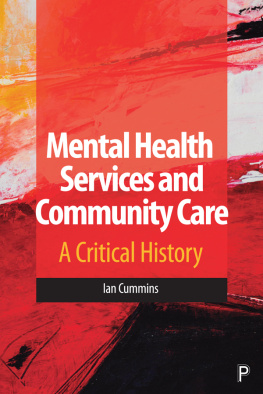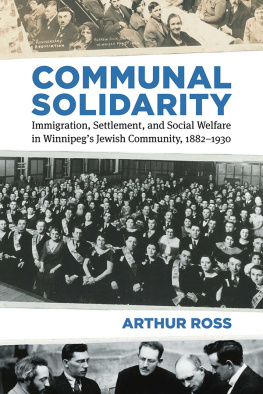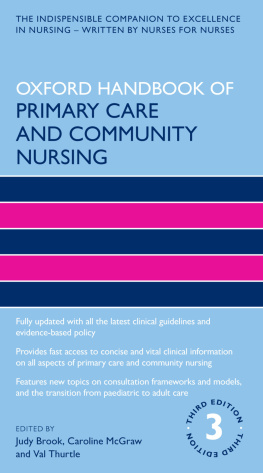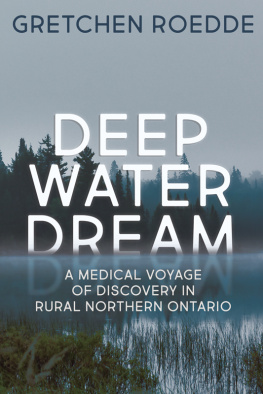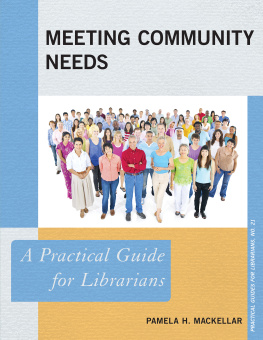Mobilizing the Community for Better Health
Mobilizing the
Community
for Better Health
What the Rest of America
Can Learn from Northern Manhattan
EDITED BY
ALLAN J. FORMICOLA
AND
LOURDES HERNNDEZ-CORDERO

Columbia University Press
New YorkColumbia University Press
Publishers Since 1893
New York Chichester, West Sussex
cup.columbia.edu
Copyright 2011 Columbia University Press
All rights reserved
E-ISBN 978-0-231-52527-5
Library of Congress Cataloging-in-Publication Data
Mobilizing the community for better health : what the rest of America can learn from
Northern Manhattan / edited by Allan J. Formicola and Lourdes Hernndez-Cordero.
p. ; cm.
Includes bibliographical references and index.
ISBN 978-0-231-15166-5 (cloth : alk. paper)ISBN 978-0-231-15167-2 (pbk. : alk. paper)ISBN 978-0-231-52527-5 (ebook)
1. Community health servicesNew York (State)New York. 2. Hospital and communityNew York (State)New York. 3. Medical policyNew York (State)New York. 4. Health promotionNew York (State)New York. 5. Health services accessibilityNew York (State)New York. I. Formicola, Allan J. II. Hernndez-Cordero, Lourdes.
[DNLM: 1. Columbia University. 2. Community Health ServicesmethodsNew York City. 3. Community-Institutional RelationsNew York City. 4. Health Plan ImplementationmethodsNew York City. 5. Health PolicyNew York City. 6. Health Promotionorganization & administrationNew York City. 7. Health Services Accessibilityorganization & administrationNew York City. WA 546 AN7]
RA395.A4N744 2010
362.12097471dc22
2010026496
A Columbia University Press E-book.
CUP would be pleased to hear about your reading experience with this e-book at .
References to Internet Web sites (URLs) were accurate at the time of writing. Neither the author nor Columbia University Press is responsible for URLs that may have expired or changed since the manuscript was prepared.
This book is dedicated to Dr. Henrie Treadwell and to the people of Washington Heights/Inwood and Harlem.
Dr. Treadwell was the guiding light for the Community Voices program. She set the pace for all of the participating sites. Dr. Treadwell infused the heart and soul into Community Voices. As the program director of the W. K. Kellogg Foundations Community Voices: Health Care for the Underserved program, she brought together a supportive team to assist us in meeting and exceeding the goals of our projects. It was especially gratifying to work with her, as she was a motivator, taskmaster, and model for each of us working on the initiative. Dr. Treadwell is a tireless advocate for those in society who are often called the voiceless. Through this program she gave them a voice and continues to do so now at the Primary Care Center at Morehouse School of Medicine.
Washington Heights/Inwood and Harlem, the sites for the Northern Manhattan Community Voices Collaborative, provided an invigorating environment for the work of the collaborative and the inspiration for the work accomplished. The two communities are blessed with many dedicated leaders in community-based organizations and in the clergy. Along with their locally elected officials, they opened doors that permitted the two communities to make enormous advances for their residents. The communities are diverse and provide an exceptional setting for the institutions of which they are a part. They are truly the melting pot that makes the United States the envy of the world.
Contents
Part I
Beginnings
Introduction:
The Northern Manhattan Community Voices Collaborative
Allan J. Formicola and Lourdes Hernndez-Cordero
1. Creating the Collaborative Foundation
Allan J. Formicola, Moiss Prez, and James McIntosh
2. The Collaborative Structure and the Challenges We Faced
Sandra Harris
Part II
Promoting Health and Primary Care
3. Community Health Workers: A Successful Strategy for Restoring the Health of a Community
Moiss Prez, Jacqueline Martnez, and Laura Frye
4. Asthma Basics for Children (ABC):
Building an Asthma Support System from the Ground Up
Sally E. Findley with Gloria Thomas, Rosa Madera-Reese, Mara Lizardo, Mario Drummonds, and Benjamin Ortiz
5. Start Right Coalition:
Building on Community Initiatives for Childhood
Immunization Promotion
Sally E. Findley with Martha Snchez, Miriam Meja, Mario Drummonds, and Matilde Irigoyen
6. The Legacy Smoking-Cessation Project
Cheryl Ragonesi, Martin Ovalles, and Daniel F. Seidman
Part III
Strengthening the Safety Net
7. Salud a Su Alcance (SASA): Health Within Your Reach
Anita Lee
8. Health Information Tool for Empowerment (HITE): Making Health Care Resources a Mouse Click Away
Yisel Alonzo
9. HealthGap and the NMCVCs Effort to Cover the Uninsured
Harris K. (Ken) Lampert
10. Healthy Choices:
Mobilizing Community Assets to Combat the Twin Epidemic of Obesity and Diabetes
Jacqueline Martnez and Yisel Alonzo
Part IV
Providing Dental and Mental Health Care
11. Columbia Community DentCare Program
Stephen Marshall, David Albert, and Dennis Mitchell
12. Mental Health Policy Paper:
Giving Voice to a Neglected Epidemic
Lourdes Hernndez-Cordero
13. The Thelma C. Davidson Adair Medical/Dental Center
Allan J. Formicola
Part V
Summing Up and Scaling Up
14. Summing Up
Allan J. Formicola and Lourdes Hernndez-Cordero
15. Scaling Up
Lourdes Hernndez-Cordero, Susan Sturm, Kathleen Klink, and Allan J. Formicola
Change in Parents Asthma Management Practices by Use of ABC Handbook |
Childrens Asthma Status Before and After Participation in ABC |
Enrollment in Start Right by Programmatic Strategy (October 2000March 2007) |
Coalition versus National and New York City Immunization Coverage Rates by Race/Ethnicity, 20022007 |
Demographic, Socioeconomic, and Health Characteristics of Northern Manhattan, 2000 |
The Steering Committee and Other Partners |
Making a Difference: Community Health Workers |
Making a Difference: Asthma Basics for Children Initiative |
Making a Difference: Start Right |
Columbia University Tobacco Cessation Clinic
Demographics and Outcomes, 2002 versus 2007 |
Making a Difference: SASA |
Making a Difference: HITE Website |
Making a Difference: HealthGap Insurance Plan |
Initial Premiums Rates |
Making a Difference: Community DentCare |
Making Difference: Mental Health Report |
Making a Difference: The Adair Center |
The Economics of Prevention |
Out of a belief that the best solutions to improving health in underserved communities can come from the insights and wisdom of the residents of those communities, the W. K. Kellogg Foundation launched a $55 million national initiative in 1998 called Community Voices: Health Care for the Underserved. Bringing the diverse voices of an entire community to the table to promote action around improving health was the core strategy of the initiative, which funded thirteen sites across the nation. The foundation wanted to create models responsive to local interests and raise them up as national models to help address the crisis in health care and the growing number of uninsured, underinsured, and underserved citizens. These dynamic learning laboratories were local collaborations among institutions, government, and community, supported under the premise that members of underserved communities, when equipped with information, tools, and resources, can and should contribute to reorienting the health care delivery system.


